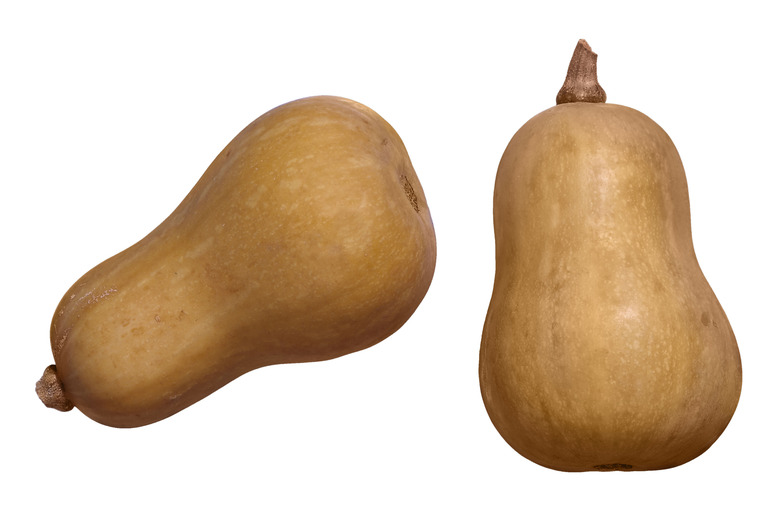How To Ripen Butternut Squash After Picking
Planted in summer, butternut squash (Cucurbita moschata) is a fall vegetable grown for its nutty, sweet, orange flesh. Rich in beta-carotene, the flesh is often used in soups and baked goods. If you planted later than usual, or if your vines grew slowly, your butternut squash might not be quite ripe when the first hard frost is forecast. Don't fret. Harvest the unripened fruits and cure them off the vine, so the rinds harden and the flesh sweetens a bit before use.
Step 1
Step 1
Cut the butternut squash from the vine with a sharp knife, leaving about 1 inch of the stem intact so the fruits do not rot at the points of attachment.
Step 2
Step 2
Hold the body of the squash, not the stem, and wash it with soapy water. Rinse well. Make a 1 part bleach, 9 parts water solution, and dip the squash in it. Wipe dry with an absorbent rag. This prevents any soil-borne diseases from infecting your harvested squashes.
- Planted in summer, butternut squash (Cucurbita moschata) is a fall vegetable grown for its nutty, sweet, orange flesh.
- Cut the butternut squash from the vine with a sharp knife, leaving about 1 inch of the stem intact so the fruits do not rot at the points of attachment.
Step 3
Step 3
Cure butternut squash in a place where the temperature is 80 to 85 degrees Fahrenheit with a relative humidity of 80 to 85 percent. Leave the squash in that environment for 10 to 14 days, turning them every two to three days to ensure they cure uniformly.
Step 4
Step 4
Store cured butternut squash in a dry, cool area where the temperature will be a constant 50 to 55 degrees Fahrenheit. The area should be well ventilated and away from ripening fruits such as apples, which emit a gas that causes butternut squash to quickly decay. Use your prematurely harvested squash as soon as possible, because they will not store as well as squash that was fully mature at harvest time.
Tip
After curing, butternut squash picked when fully mature will store for two to three months in a cool, dry location.
Tip
Fully mature fruit are uniform in color and have hard rinds that are difficult to penetrate with a thumb nail.
Things Needed
- Knife
- Dish soap
- Bucket or container
- Bleach
- Rag
References
- Iowa State University: When Should I Harvest Butternut Squash?
- University of Illinois Extension: Harvesting and Storing of Pumpkins, Winter Squash and Gourds
- Oregon State University Extension Service: Store Winter Squash and Pumpkins
- Iowa State University: Food of the Week – Butternut Squash
- North Carolina State University: Butternut Squash
